
We collect basic website visitor information on this website and store it in cookies. We also utilize Google Analytics to track page view information to assist us in improving our website.
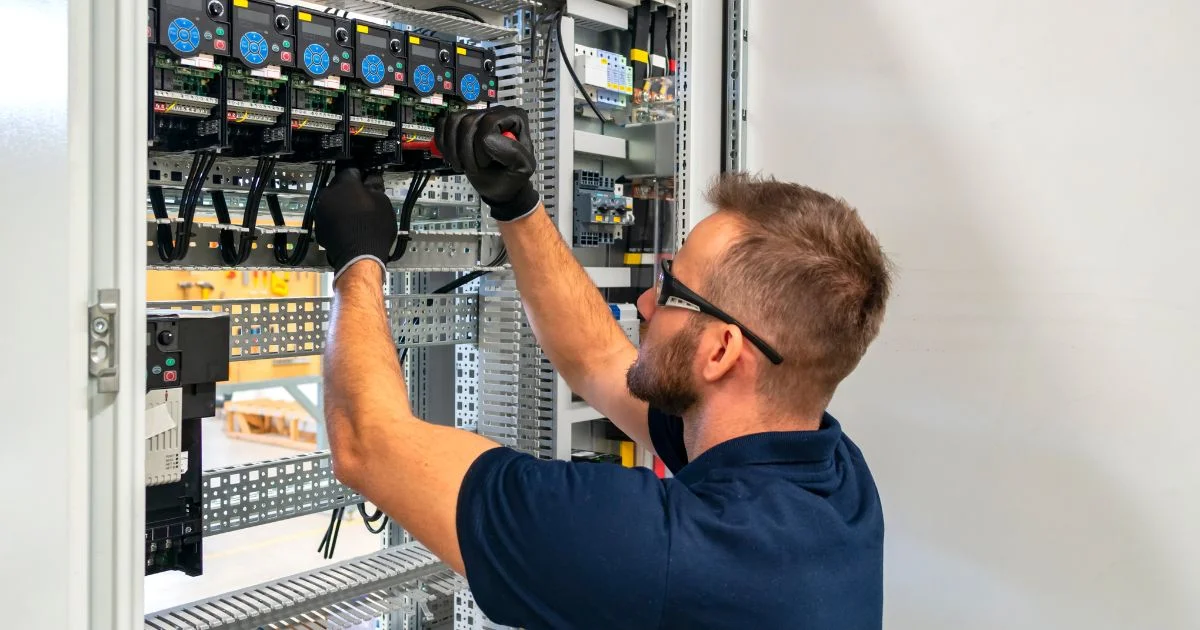
In tight enclosures and cost-sensitive applications, autotransformers can seem like the obvious choice. After all, they’re lighter, cheaper, and more compact than conventional transformers—so why not use them everywhere?
Because what you save in size and materials, you may give up in system safety and isolation.
Autotransformers use a single winding instead of two, which makes them efficient but also means there’s no electrical separation between input and output. That trade-off isn’t just theoretical. It has real implications for compliance, fault protection, and overall system performance.
This post explains what autotransformers are, where they work best, and where they don’t. Whether you're designing an industrial lighting system, a motor control panel, or a cost-conscious voltage step-down circuit, understanding their role could help you make a smarter decision.
An autotransformer uses a single winding with shared primary and secondary taps instead of separate windings. The input and output circuits share a common electrical connection through this single winding.
This design delivers lower weight, cost, and footprint compared to conventional two-winding transformers. The shared winding means less copper, which translates to better efficiency and reduced material costs.
Autotransformers work for both step-up and step-down applications. The tap positioning determines your voltage ratio; you're not limited to stepping down voltage like some engineers assume.
Slim Line LED autotransformers handle 347V and 480V industrial lighting systems efficiently. These units fit efficiently into tight electrical panels, making them ideal for LED retrofit applications where space is limited.
Slim Line autotransformers from Electronic Craftsmen are commonly selected in lighting designs that prioritize space savings and performance over isolation. The voltage conversion they provide supports modern LED drivers without the need for custom enclosure modifications.
The biggest difference? No galvanic isolation. Your input and output circuits share a direct electrical connection through the common winding.
Conventional transformers transfer power through magnetic coupling between separate windings. If the primary winding fails, your secondary circuit stays electrically isolated. With autotransformers, a winding failure can put full input voltage on your output circuit.
Lower impedance gives autotransformers better voltage regulation under varying loads. That's great for motor applications where voltage stability matters.
But that same low impedance means less fault protection. High circulating currents can develop if system faults occur, potentially causing more damage than isolated transformer designs.
Slim Line autotransformers from Electronic Craftsmen are often chosen in lighting designs where form factor and efficiency outweigh the need for isolation. The compact design fits standard electrical enclosures without custom modifications.
Industrial lighting and HVAC control panels represent prime autotransformer applications. The voltage ratios typically stay reasonable (480V to 277V or 240V), and the electrical systems already handle multiple voltage levels safely.
Motor soft-start systems benefit from autotransformer designs. Variable autotransformers provide smooth voltage ramp-up that reduces starting current surges and mechanical stress on motor systems.
3-phase voltage correction in factory automation often uses autotransformer configurations. When your supply voltage runs consistently high or low, buck-boost autotransformers provide precise correction without the cost and size penalties of isolation transformers.
Low-voltage battery charging systems work well with autotransformer designs, especially where space constraints matter more than isolation requirements.
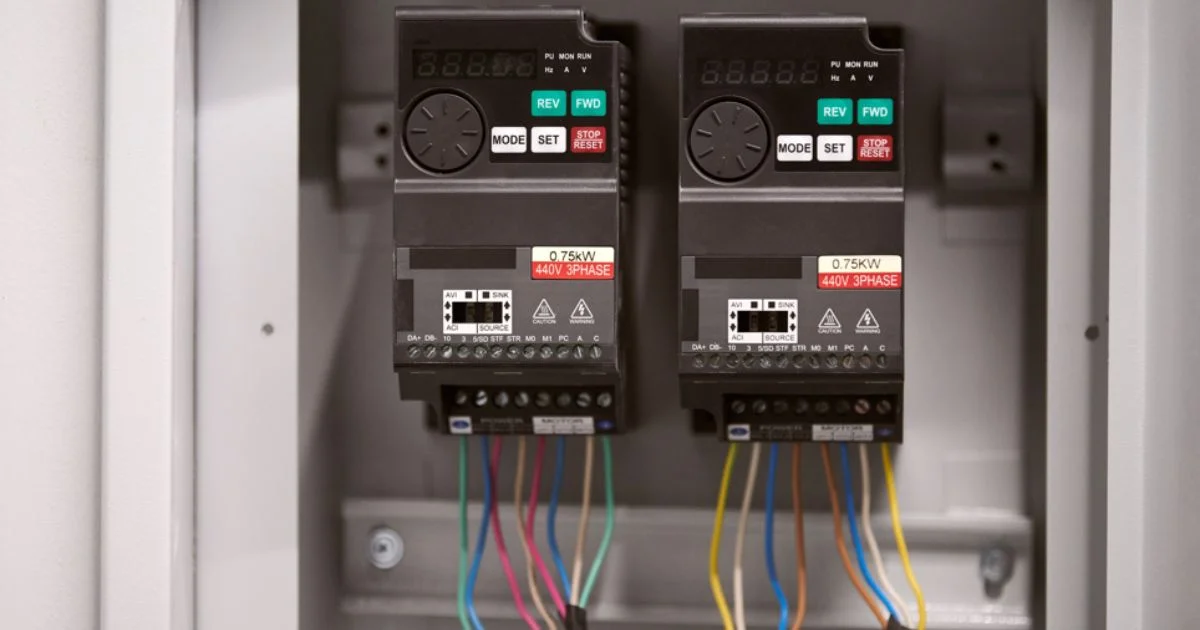
Compact enclosures where every cubic inch matters
Low differential voltages like 480V to 240V ratios
Systems with external protection schemes that handle fault conditions properly
The efficiency advantage becomes more significant in higher-power applications. A 50kVA autotransformer might run 3-4% more efficient than an equivalent isolation transformer—that's real energy savings over time.
Medical equipment applications require galvanic isolation for patient safety. That shared neutral connection in autotransformers creates unacceptable risk in healthcare environments.
Avionics and aerospace systems typically mandate isolation transformers. The fault conditions in aircraft electrical systems make isolation a critical safety requirement.
Signal integrity applications need the noise isolation that only magnetic coupling provides. Autotransformers can't block high-frequency noise the way isolated transformer designs do.
Systems prone to surges or unbalanced loads create dangerous conditions with autotransformer designs. Lightning strikes or equipment failures can put hazardous voltages where they don't belong. See how core material choices impact thermal limits and surge performance.
"Autotransformers are just cheaper transformers."
That's not accurate. They serve a completely different engineering function. You're trading isolation for efficiency and size—not just saving money. Understanding this trade-off prevents costly specification mistakes.
Tap positioning affects voltage drop under load. Calculate your actual load current and factor in winding resistance when determining tap locations.
Thermal hotspots develop in compact autotransformer builds. The shared winding carries both primary and secondary currents in some sections, creating higher heat generation than conventional designs.
Fault current mitigation requires careful planning. External fusing, surge protection, and ground fault detection become more critical when you lose the inherent protection of galvanic isolation.
Class insulation and winding material selection matter more in compact builds. Higher operating temperatures in small enclosures demand better insulation systems.
Corona testing becomes essential for high-voltage autotransformer applications. Partial discharge can develop at tap connections if insulation systems aren't properly designed.
Electronic Craftsmen supports custom winding configurations and insulation systems rated to 220°C—helpful for compact autotransformer builds that run warm.
The isolation concern creates higher risk if system faults aren't properly mitigated. You need robust external protection that accounts for the shared neutral connection.
UL and CSA standards allow autotransformer use in specific applications, but requirements are stricter than for isolation transformers. Understanding these compliance differences prevents project delays.
Partial discharge and dielectric strength testing become critical in autotransformer applications. The tap connections and shared winding create potential failure points that need thorough evaluation.
External circuit protection and ground fault detection aren't optional—they're essential safety measures. The protection scheme becomes part of the transformer system design.
Why does experience matter? Tap accuracy, insulation class selection, and thermal simulation require deep engineering knowledge that comes from years of custom builds.
A comprehensive design library enables quick turnaround for common voltage requirements like 277V, 347V, and 480V systems. Standard configurations speed project timelines while maintaining custom performance.
Hybrid builds combine autotransformers with current sensing or other functions in compact assemblies. These integrated solutions solve multiple design challenges simultaneously.
In multi-voltage systems, some teams integrate autotransformers with additional magnetic components—like current sensors, filtering coils, or thermal protection windings—into a single compact assembly. These hybrid units reduce overall component count, simplify wiring, and save space inside crowded electrical panels.
They’re especially useful in retrofit environments or modular systems where real estate is limited. With proper shielding and thermal design, these assemblies can maintain compliance while streamlining installation and maintenance.
Teams building for building systems and industrial controls often rely on Electronic Craftsmen for slim-profile autotransformer assemblies that integrate seamlessly into multi-voltage environments.
The manufacturing capabilities matter too. Precision winding machines ensure tap accuracy, while vacuum encapsulation systems provide reliable insulation in compact form factors.
Autotransformers are efficient and compact solutions, but they're not universal answers to every voltage conversion challenge.
Always consider system-level risks: fault conditions, compliance requirements, and isolation needs. The shared neutral connection that makes them efficient also creates responsibilities you can’t ignore.
When used correctly, they save space, cost, and material while delivering excellent performance. The key is matching the technology to applications where the trade-offs make sense.
Choosing the right magnetic component isn’t just a design but a strategic step. Whether you're building to meet inspection criteria, reduce BOM costs, or improve long-term efficiency, knowing when to apply autotransformer technology (and when to avoid it) helps prevent costly rework.
Have a design in mind or working through constraints? Talk to us about whether an autotransformer fit—and how to make it work for your specs.
Even if your project doesn’t call for autotransformers today, understanding how they work helps you evaluate trade-offs across your entire system. You might use isolation in one part of the design and autotransformers elsewhere to save space or cost.
This kind of mixed strategy is common in industrial and commercial projects where budget, safety, and layout compete for priority. The more complex the system, the more important it is to work with a supplier who can tailor magnetic solutions to your entire architecture—not just a single part number.

In aerospace, there’s no room for guesswork. Every component—no matter how small—must meet the highest standards. That’s why AS9100 exists. It’s the gold standard for quality management in aerospace manufacturing, created to ensure parts are built with precision, tested for reliability, and fully traceable at every step.
However, this certification isn’t just for planes and satellites. The same systems that keep aircraft safe are now guiding how many teams build parts for energy, medical, defense, and communications. And for components like transformers, inductors, and magnetic assemblies—where performance depends on exact design and materials—that kind of structure makes a real difference.
This post breaks down what AS9100 certification really involves, how it applies to magnetics, and why working with an AS9100-certified manufacturer is a smart move—even if you’re not building for aerospace. Whether your system operates at high altitudes or deep in a control cabinet, quality still matters.
AS9100 is a quality management standard created specifically for aerospace and defense. It’s built on ISO 9001 but adds deeper requirements that reflect the complex needs of flight systems. For custom magnetics manufacturers, it means every step of the process—from design to testing—is held to some of the highest standards in the industry.
AS9100 covers areas like:
Full traceability of materials
Detailed documentation for every step
Risk-based decision-making during development
Strict testing and verification processes
Oversight of suppliers to prevent issues with quality or counterfeits
Getting certified isn’t easy. It involves a full audit by an accredited body, along with proof that processes are stable and consistent. Not all manufacturers meet these standards.
Once certified, companies don’t stop there. AS9100 requires yearly audits and full recertification every three years. That ongoing process helps ensure manufacturers stay focused on improvement—not just passing a one-time check.
Magnetics often fly under the radar—until something goes wrong. But components like transformers and inductors are critical in nearly every system that depends on clean, stable power. When these parts fail, the results can be serious.
In aerospace, even a small shift in performance can affect everything from flight control to communication. Magnetic components must survive vibration, extreme temperatures, and sometimes radiation, all while maintaining their exact performance specs.
That’s where AS9100 makes a difference. Certified manufacturers follow strict design and process controls that help catch problems early. This includes things like:
Environmental and stress testing
Design verification at each stage
Process controls for winding, potting, and soldering
Full performance testing for every build
The result is better consistency, fewer unexpected issues, and higher confidence that each part will perform as designed. And while these benefits are critical in aerospace, they also help across industries where failure isn’t an option.
Many industries face the same performance challenges as aerospace—just in different forms. That’s why AS9100 certified magnetics are gaining traction in other high-reliability fields:
Systems like MRI machines, patient monitors, and diagnostic tools need components that are stable and trustworthy. Transformers and inductors designed under AS9100 can support these requirements with proven reliability and traceability.
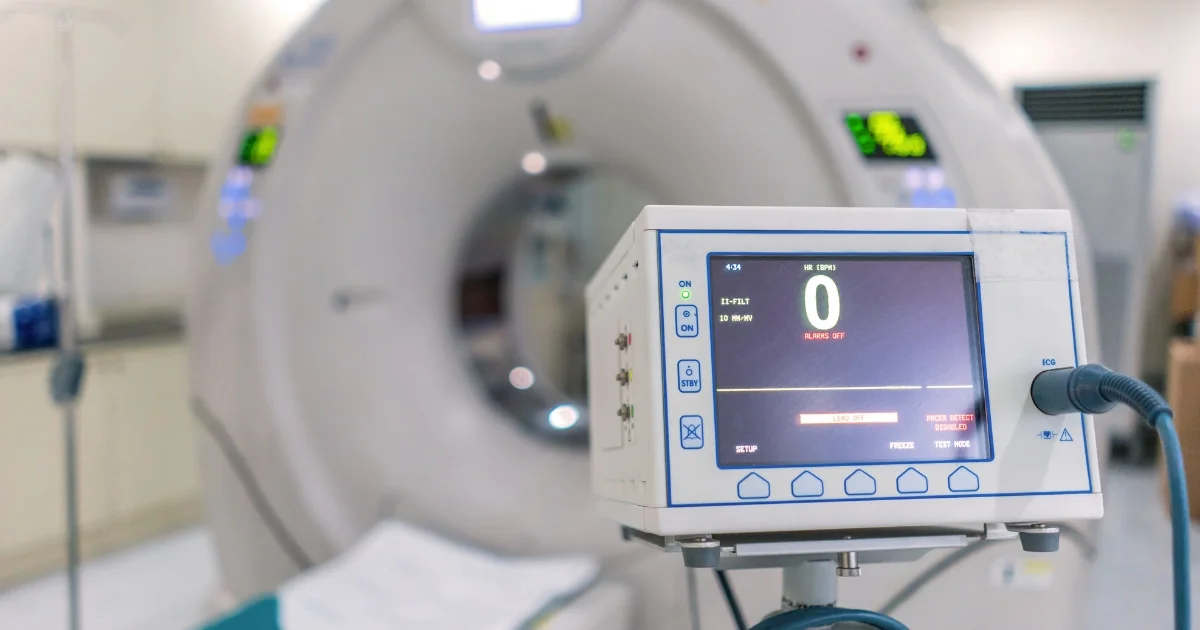
Military communications and field systems operate in tough conditions. The quality controls required by AS9100 help ensure that magnetic parts can handle vibration, temperature shifts, and long-term use without failure.
Solar and wind equipment often runs for years with little downtime. Components built under AS9100 guidelines bring long-term durability to converters, inverters, and control systems exposed to outdoor conditions.
High-vibration environments like trains or factory floors place stress on every part. Magnetics built under AS9100-certified processes are designed to meet those demands.
Uptime is critical in networks and signal systems. Components built to strict standards—like those required in aerospace—can help reduce maintenance and improve system availability.
Working with a certified manufacturer gives OEMs and engineers:
More predictable performance
Clear documentation for compliance or traceability
Less risk of production issues or late-stage changes
Easier onboarding into regulated environments
Whether the end system flies or not, AS9100 certified magnetics help build stability into complex designs—and that matters everywhere.
AS9100 certification isn’t just a label—it reflects a full quality system that affects how a manufacturer works at every level.
Reviewing current processes through a gap analysis
Developing updated procedures and documentation to meet AS9100 standards
Implementing quality systems across all operations
Completing a pre-assessment to identify any weak points
Undergoing a formal certification audit by an accredited third-party organization
Yearly surveillance audits to review key processes
Internal audits to ensure continuous alignment with the standard
Management reviews to track system performance
Documented corrective actions for any issues found
Full recertification every three years to maintain the certification
For transformer and inductor manufacturing, certification adds an extra layer of discipline. It includes:
Verifying and tracking all materials used
Validating key steps like winding and impregnation
Running environmental tests that match real-world use
Monitoring critical performance metrics through process control
Keeping detailed records of every design, procedure, and test result
This commitment to quality continues throughout the product’s life—from design and production to final delivery and field use. The system helps reduce risk at every stage, supporting things like counterfeit part prevention, failure tracking, and using customer feedback to improve over time.
Many manufacturers hold ISO9001 certification, which shows they follow basic quality management practices. It’s a solid foundation, but AS9100 takes things further—especially for industries that demand high reliability, like aerospace or advanced electronics.
General quality management system requirements
A process-based approach to production
Customer satisfaction and feedback
Continuous improvement practices
Detailed regulatory compliance and documentation
Strong risk management throughout the product lifecycle
Emphasis on product safety and key feature identification
Configuration and change management controls
Tighter process validation and operational discipline
You can think of AS9100 as ISO9001 designed for mission-critical environments. These extra requirements aren’t just formalities—they help address real-world challenges where a single failure can cause major problems.
For custom magnetics manufacturers, AS9100 leads to stronger design systems, better process control, and more complete testing. That means more dependable components, whether they end up in aerospace or anywhere else performance matters.
Not all AS9100 certified manufacturers operate the same way. For teams sourcing high-reliability magnetics, it’s not just about earning the certification—it’s about how well those quality practices are built into everyday production.
A good partner will have in-house capabilities for key steps like winding, potting, encapsulation, and testing. These operations directly affect how magnetic components behave—especially in demanding systems where temperature, voltage, or size constraints come into play.
Electronic Craftsmen, for example, supports multiple winding formats, including toroidal and rectangular winding. This flexibility makes them a strong fit for both compact layouts and high-current designs.
It’s also worth asking whether the manufacturer provides custom magnetics, not just catalogue parts. Complex systems often need transformers or inductors tuned to specific power levels, frequencies, or mechanical constraints. Partners that offer design support, prototyping, and simulation tools can help ensure the magnetic components work exactly as intended within your larger system.
For harsh or high-risk environments, advanced testing capabilities are essential. Thermal cycling, and partial discharge detection (Corona), help validate that components will perform as expected—not just in lab conditions, but in the field over time.
Ultimately, selecting the right magnetics partner means finding a team that brings more than compliance. It’s about working with engineers who understand your application, build for long-term consistency, and have the tools to support precision at every step of the process.
AS9100 certification is more than a formality—it reflects a manufacturer’s full commitment to quality across design, production, and testing. For magnetic components, that means tighter controls, deeper documentation, and higher confidence in performance, especially when failure isn't an option.
Working with an AS9100 certified magnetics manufacturer gives you more than a finished part. It gives you visibility into the process behind that part—how it was designed, built, and verified to perform as expected. That kind of process discipline leads to better outcomes, whether you're developing systems for aerospace, energy, defense, or industrial applications.
The value of AS9100 doesn't end with compliance. It supports long-term reliability, smoother onboarding for regulated projects, and fewer surprises during testing or integration. The same principles that keep aircraft systems running safely help reduce risk in every environment.
If your application demands performance under pressure—whether in the air, on the ground, or in mission-critical systems—partnering with an AS9100 certified manufacturer gives you more than peace of mind. It gives you a clear advantage: proven process control, documented reliability, and components built to meet tight specs without cutting corners.
Choosing a partner like Electronic Craftsmen means building with confidence from the start. Because when failure isn’t an option, neither is guesswork.

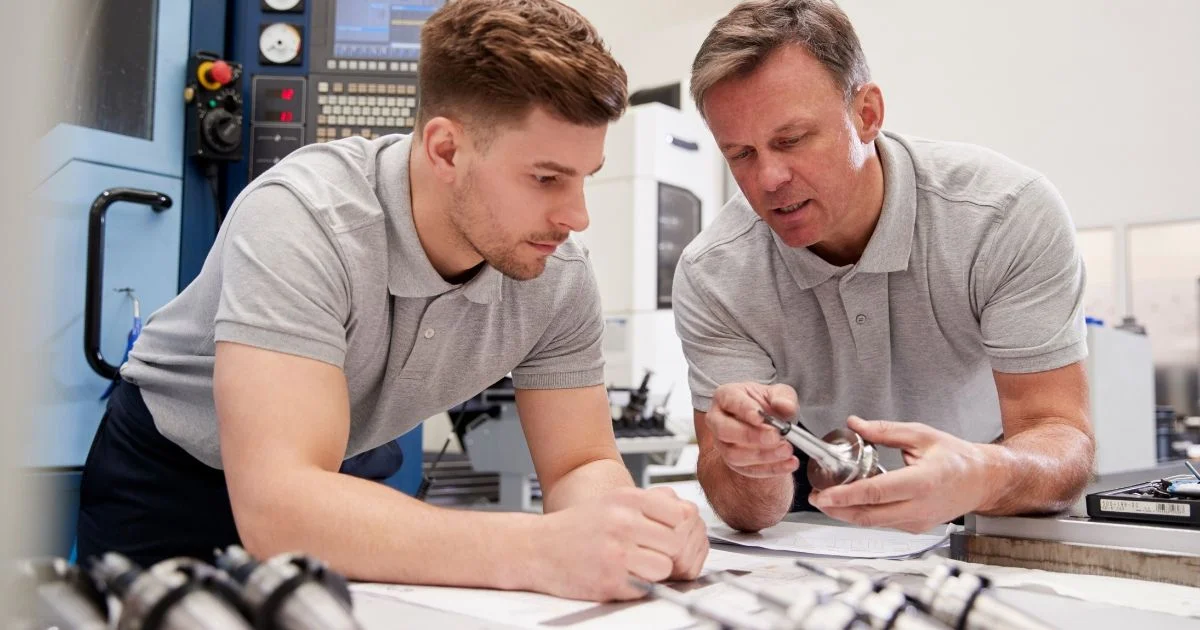
In magnetics manufacturing, production delays often start at the supplier level. Vendor relationships, then, aren’t just a procurement concern. They’re a core part of performance, especially when you’re delivering high-reliability magnetics for industries like aerospace, green tech, or automation.
When transformers, inductors, and custom assemblies need to meet demanding specs, timeline precision and quality assurance become inseparable. At Electronic Craftsmen, we’ve seen firsthand how the right partnerships can make or break an order. That’s why we’ve spent over a decade working with vetted vendors who understand the stakes—and operate with the same standards of precision we do.
Outsourcing isn’t new in electronics. But when it comes to magnetic components, many teams still underestimate the hidden risks of choosing offshore vendors with no proven track record.
On paper, a lower unit cost might look like a win. But when quality issues surface or timelines fall apart, that initial savings disappears. Common issues include:
Inconsistent quality control: A core material substitution, a sloppy winding pattern, or an under-cured encapsulation can lead to early failures and field returns.
Communication breakdowns: Language barriers, engineering misinterpretations, or lack of real-time visibility can derail even simple adjustments.
Timeline disruptions: Customs delays, unexpected shortages, or inflexible shipping timelines can grind your build schedule to a halt.
These risks are amplified in high-spec sectors like aerospace and defense. We’ve seen programs stall over millimetre deviations and missed test protocols. That’s why every component in our supply chain is QA-tested, traceable, and sourced through relationships that prioritize long-term reliability.
These real-world obstacles demonstrate why Electronic Craftsmen maintains rigorous qualification standards. We don’t just approve vendors; we integrate them into our process. That means ongoing quality audits, spec reviews, and process feedback loops that catch issues early and prevent them from recurring.
Our goal isn’t just to find a supplier. It’s to maintain a supply chain that operates at the same level of engineering discipline we apply internally.
Many of Electronic Craftsmen’s vendor partnerships go back more than ten years. That history creates a level of alignment that’s hard to replicate with new or untested suppliers. When a vendor understands not just what you’re building, but why certain specs matter, the entire process runs smoother.
These partnerships bring real advantages:
Shared context: Vendors familiar with our transformer geometries or potting requirements don’t need re-training on every order.
Proactive adjustments: A trusted vendor will flag a material lot that could compromise dielectric strength before it ever reaches the floor.
Faster iteration cycles: When design tweaks happen mid-program, our vendors can pivot quickly—because they’re already aligned on quality benchmarks.
That kind of embedded understanding becomes critical when tolerances are tight, specs are complex, and deadlines leave no room for error.
It’s also what enables flexibility under pressure. Whether it’s a sudden ramp-up in production or a last-minute change to thermal insulation standards, long-standing partners are more likely to adapt without causing delays.
And when global material shortages hit, it’s those same relationships that quietly keep things moving.
Electronic Craftsmen doesn’t avoid offshore sourcing—we optimize it. Our approach balances global reach with domestic control, blending cost efficiency with full conformance. We partner with qualified international vendors for sourcing, but final assembly and QA happen here in Ontario.
Every part goes through:
Domestic inspection and functional testing using Voltech and in-house equipment
Thermal and corona testing in controlled lab conditions
Dielectric verification and visual QA to ensure zero defect delivery
This layered approach keeps costs in check while ensuring the same standards we’re known for: AS9100, ISO9001, MIL-PRF-27, and Class 220°C insulation conformance, just to name a few.
Some teams rely on our hybrid model to balance high-volume sourcing with aerospace-level QA. Others use our build-to-print services to localize complex winding or encapsulation steps. In every case, the vendor network is part of the solution—not the liability.
Our team handles complex builds requiring precision winding, multi-core assemblies, and encapsulation. Having this capability onshore allows us to move quickly when specs change, test requirements evolve, or a production delay needs a workaround. The offshore support provides material diversity and cost control. It’s a supply chain built to serve modern engineering needs without compromise.
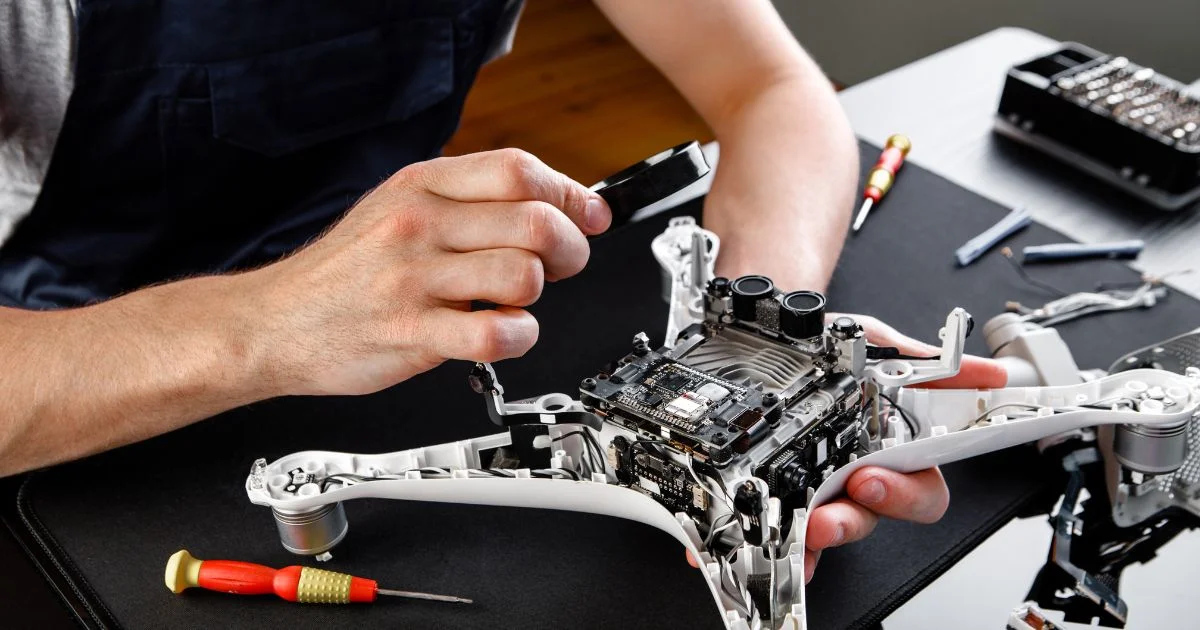
In magnetics, time isn't just money—it's certification, audit-readiness, and launch clearance. A missed delivery window can mean rebooked test labs, late-stage redesigns, or lost client confidence. When a vendor consistently meets specs and timelines, they’re not just a supplier. They’re part of your risk mitigation strategy.
Our vendors know exactly how we prep, inspect, and pot these units. We build confidence into every quote, timeline, and customer commitment we make. That reliability becomes especially important in industries like rail and marine power systems, where environments are harsh and downtime is costly.
The ability to count on component consistency allows our clients to meet safety, reliability, and regulatory standards without added complexity. We’re proud to say many of our clients choose us not just for what we build but because of how predictable we make their operations.
Established magnetics manufacturers bring something invaluable to the table: a deep knowledge base built over thousands of projects. This experience translates to tangible benefits you can’t get from newer suppliers.
With over six decades of experience, Electronic Craftsmen has built a design library containing thousands of custom magnetic components. That archive is not just a number but a competitive advantage. In many cases, we’ve already solved variations of the challenges you’re facing today. Instead of starting from scratch, our team can adapt proven designs, reducing both development time and validation risk.
Experience also means having the right tools in place. Our facility includes vacuum encapsulation chambers, corona testing up to 20kVac, and thermal cycling capabilities ranging from -73°C to +190°C. These systems allow us to thoroughly validate performance in extreme conditions, long before any component reaches a customer site.
And perhaps most important: seasoned engineers. Our team knows which core materials excel in high-frequency switch-mode applications. We know how soldering methods affect long-term thermal behavior. And we know what tends to go wrong in aerospace, rail, or defense environments—because we’ve seen it. And we’ve built around it.
Magnetics is a specialized space. The performance of a custom inductor or pulse transformer depends on dozens of variables—core geometry, winding pattern, insulation class, soldering method, thermal behavior. Experience with these trade-offs makes vendors more than part suppliers. It makes them technical allies.
At Electronic Craftsmen, we extend that mindset into every design review. Whether we’re prototyping a high-voltage transformer for renewable energy or modelling thermal performance for a sealed assembly, our vendor network is looped in early. That means fewer surprises, faster validation, and smarter material use.
We continue delivering reliable custom magnetics without compromising on schedule or spec. From current sense transformers in lab equipment to ruggedized inductors for defense, every unit is an outcome of technical alignment and collaboration.
That collaboration often starts with vendor input during material selection, insulation review, or tooling considerations. Many of our vendors act as early-stage advisors, helping refine part manufacturability and reduce lead time risk before we ever wind a coil.
We also maintain a deep library of proven magnetic component designs, built over decades of production. This gives us the ability to adapt tested configurations to new challenges—helping reduce lead times and speed up qualification in industries where time to market is critical.
When evaluating magnetic component suppliers, it’s not just about specs or price points—it’s about trust, responsiveness, and long-term alignment.
Before you sign the next PO, ask:
Does this vendor understand our application environments and constraints?
Can they adapt to change without derailing timelines?
Do they bring engineering insight or just deliver parts?
The strongest vendor relationships don’t just check boxes. They improve outcomes across every stage of development and delivery.
In custom magnetics, consistent performance comes from more than in-house talent. It comes from the relationships that support your work behind the scenes.
That’s why Electronic Craftsmen has invested in vendor partnerships that last. Our network helps us meet demanding specs, turn around prototypes quickly, and avoid the hidden costs of poor communication or inconsistent QA. We don’t treat vendors as interchangeable. We treat them as extensions of our own commitment to reliability.
In this industry, long-term performance starts with long-term trust. Once earned, it becomes a key driver of resilience, innovation, and uptime for the clients we serve across aerospace, automation, and beyond.
If your next build demands precision, speed, and zero-surprise delivery—let’s talk. Our network is ready when you are.

As renewable energy systems advance, they place new demands on internal components. Nowhere is that more evident than in magnetics. Transformers and inductors are expected to perform reliably across temperature extremes, switching harmonics, and tight packaging constraints.
Solar, wind, and energy storage applications introduce unique technical challenges where off-the-shelf components may not be the best choice for system designers.
Custom magnetics, designed specifically for these applications, can help address these challenges at the earliest stages of system design. By considering unique environmental factors, high-frequency switching, thermal cycling, and system integration requirements, custom solutions can minimize the risks associated with reliability and performance.
This post explores the unique challenges magnetics face with respect to solar, wind, and battery systems—and how custom component design supports long-term reliability and system success.
Modern solar inverters are among the most demanding environments for magnetics. Central inverters at utility scale operate at high power levels with aggressive efficiency targets. String inverters and module-level devices often experience rapid changes in operating conditions, especially with passing clouds or fluctuating demand.
Switching frequencies above 50 kHz are common, introducing thermal stress and requiring magnetic cores that can operate efficiently at elevated temperatures. Standard potting compounds and windings may not hold up under these conditions, leading to premature failure.
Grid-connected solar systems must follow strict rules for harmonic distortion (THD). However, high-frequency switching tends to generate harmonics that need to be suppressed before they reach utility infrastructure. Standard magnetics may struggle to attenuate these signals effectively.
Custom magnetics can be tailored for:
Reduced core losses at high frequencies
Improved isolation distances to minimize EMI coupling
Winding techniques that balance capacitance and inductance
String inverters and rooftop-mounted devices are typically housed in compact enclosures. Limited airflow and outdoor exposure increase the risk of thermal buildup and moisture ingress. Off-the-shelf parts, often designed for controlled indoor use, may degrade quickly in such environments.
Custom solutions can:
Include encapsulation for humidity resistance
Utilize thermally stable winding materials
Be shaped for non-traditional footprints (e.g., vertical mount designs)
Wind turbines, particularly offshore and high-capacity units, present unique magnetic challenges. Generator systems can produce rapid current fluctuations, especially during startup or changes in wind speed. Inductors and transformers must be able to manage high inrush currents without saturating.
Where off-the-shelf inductors might saturate under these loads, custom components can be designed with:
Controlled saturation profiles
Distributed air gaps for smoother magnetic response
Core materials selected for high permeability and low loss
Wind turbines put magnetics in tough conditions. Their nacelles are high off the ground and constantly vibrating. Standard inductors may fail due to mechanical fatigue or resin cracking.
Custom magnetics for wind applications often include:
Reinforced bobbins and windings
Vacuum encapsulation for vibration dampening
Mechanical mounting features integrated into the component design
Variable-speed wind turbines often inject harmonics into the local grid, affecting other systems nearby. Custom filter inductors can be tuned to specific harmonic ranges to reduce these effects before they propagate.
Battery energy storage systems (BESS) require magnetics that can handle power flow in both directions—charging and discharging. This introduces different waveform shapes and current intensities, which many single-direction magnetics are not optimized for.
Custom transformers and inductors in this space are built to:
Maintain consistent inductance across polarity changes
Handle transient loads without distortion
Provide isolation under both charge and discharge conditions
Energy storage systems are often housed in sealed containers with limited airflow. Passive thermal management becomes essential. Custom magnetics help by minimizing internal heat generation through efficient core materials and winding layouts.
Strategies include:
Using core materials with low hysteresis and eddy current losses
Selecting winding techniques that reduce hot spots
Designing for natural convection pathways within the enclosure
Battery systems must maintain galvanic isolation, even during fault conditions. This requires insulation systems that hold up during thermal events or voltage surges. Custom magnetics can incorporate high-grade insulation and layout spacing that meet specific isolation standards.
Custom doesn’t just mean different. It means built with purpose. The value lies in:
Predictable thermal behaviour: Helps avoid derating and ensures consistent performance across temperature swings.
Consistent impedance and response: Reduces distortion and improves controller feedback accuracy.
Optimized footprint: Makes the most of limited enclosure space.
Environmental resilience: Withstands vibration, moisture, and thermal shock better than general-purpose parts.
These advantages often lead to:
Fewer field failures
Lower maintenance intervention
More consistent performance over product lifetime
While custom magnetics may involve longer lead times and validation steps, they mitigate the much higher cost of failure in mission-critical renewable applications.
Understanding the true impact of magnetic component failure helps justify the investment in custom solutions. Industry reports indicate that offshore wind component failures can result in multi-million-dollar replacement costs, particularly when specialized vessels and equipment are required.
According to a T&D World analysis on transformer resiliency, "the largest transformer loss on record occurred at a power plant, resulting in business interruption costs of more than $86 million" as reported by Willis Risk Solutions. The article emphasizes how transformers face electrical, thermal, and chemical stresses that can degrade insulating oils and lead to premature failure, highlighting why custom designs with enhanced durability are critical for renewable energy applications.
For solar installations, inverter-related failures average tens of thousands of dollars in physical damage alone, with business interruption costs often doubling that figure due to extended repair times. Research indicates that offshore wind turbines experience multiple failures annually, with major component replacements running into significant costs even before considering downtime.
Consider these hidden costs:
Emergency service calls to remote installations
System downtime during peak production periods
Warranty claims and customer satisfaction issues
Regulatory penalties for grid non-compliance
Reputation damage in competitive markets
Custom magnetics represent a strategic investment that prevents these cascading failures. While custom components cost more initially than standard catalogue parts, the investment becomes justifiable when compared to the potential failure costs and risk mitigation achieved.
Working with an experienced custom magnetics partner means identifying risks early. During the design phase, key considerations include:
Voltage and current range across all operating conditions
Target switching frequency and any harmonic constraints
Ambient and internal temperature profiles
Mechanical stress and vibration profiles
Size and shape constraints from system layout
Early prototyping and testing ensure that magnetics behave as expected under real-world conditions. Testing can include:
Partial discharge detection
Thermal imaging under load
Dielectric strength testing
Accelerated thermal cycling

Renewable energy systems demand high repeatability. Custom magnetics often require:
Precision winding (foil, toroid, rectangular)
Automated electrical testing (e.g., Voltech systems)
Vacuum encapsulation for environmental sealing
Ferrite core grinding for inductance tuning
Quality-focused manufacturers also offer:
Documentation for traceability
Lot-specific test reports
This level of control cuts down variation between batches. That’s key when you need identical performance in every unit.
A few key trends are shaping the future of magnetics in renewable energy:
Wide-bandgap semiconductors (SiC, GaN): Require magnetics that operate efficiently at MHz-level frequencies.
Digital monitoring integration: Sensors embedded into magnetics for predictive maintenance.
Modular magnetics designs: Enabling easier servicing and replacement.
Sustainable materials: Including recyclable cores and low-impact potting compounds.
Engineers are increasingly looking at magnetics not as standalone components but as part of an optimized power system. That system-level thinking drives more demand for custom designs.
Custom magnetics are not just about fit and form—they’re about risk management. In renewable energy systems where uptime, safety, and performance are all critical, the cost of guessing wrong is too high.
Working with experienced engineers from the outset allows teams to identify failure modes early, test more effectively, and build in confidence from the ground up. From the heat of a rooftop inverter to the vibration of a nacelle, well-designed magnetics can make the difference between a product that performs—and one that fails prematurely.
The challenges are real, but so are the solutions. And in a space where every watt counts, solving them starts at the core.
When renewable energy systems face unexpected failures or standard magnetic components limit design flexibility, the root cause often traces back to components that weren't built for these demanding applications. Electronic Craftsmen specializes in solving exactly these challenges.
Our engineering team has developed over 10,000 custom magnetic solutions across six decades. From high-frequency transformers that thrive in desert heat to inductors that withstand offshore vibration, we've tackled the toughest renewable energy applications.
Don't let magnetic component limitations hold back your renewable energy innovations. Schedule a consultation with our engineering team to discuss your specific challenges. We'll analyze your requirements, share insights from similar projects, and develop a custom solution that ensures long-term reliability.
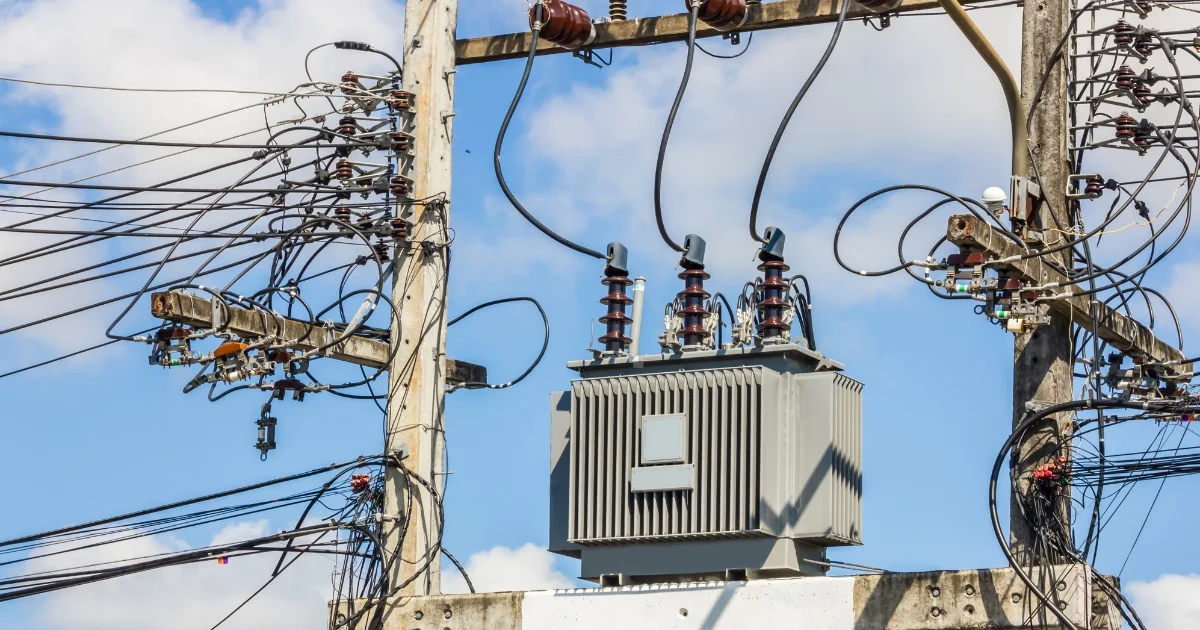
Not all transformer core material performs the same, and the wrong choice can compromise your magnetics design. Core material affects how a transformer performs under load, how hot it gets, how much space it occupies, and even how much it costs to build and run.
While windings and insulation often get the spotlight, the core is doing the heavy lifting behind the scenes. It handles the magnetic energy flow, and the way it does that depends entirely on the material you choose.
This post looks at why transformer core material matters. You'll see how it impacts efficiency, size, and cost—and how the right expertise can help you pick the optimal material from the start.
At the heart of every transformer is the core. It's responsible for the transfer of magnetic energy through the magnetic device. The better the material at handling this transfer of power, the more efficient the device operates.
Every core material behaves differently. Some materials are better at high frequency switching than others (i.e. ferrite). Each one comes with its own limitations and drawbacks as it pertains to heat rise, signal distortion, and energy loss.
When the core material precisely matches the application, everything works better. As efficiency increases, losses go down. Size and weight are easier to control but when the material isn't a good fit, systems can run hot, lose power, or require larger parts to hit the same performance levels.
That’s why engineers spend time on magnetic core selection early in the design process—it’s one of the most critical choices in magnetic components.
Core material has a direct effect on how much energy your transformer uses—and how much it wastes. As current moves through the transformer, part of it turns into heat. Some materials hold that loss a minimum…others don't.
Ferrite, for example, performs well at high-frequencies and keeps energy losses low. Silicon steel is more rugged and works better at low frequencies, though it loses more power to heat. Powdered iron sits somewhere in the middle, offering balance between performance and strength.
Access to thermal modelling and performance testing early in the design process helps teams choose materials that keep losses low without risking overheating.
Core losses happen in two main ways: hysteresis loss and eddy current loss. Hysteresis loss occurs as the magnetic field repeatedly changes direction, creating friction at the molecular level. Eddy current losses happen when small electrical currents form within the core material itself.
Different materials combat these losses in different ways:
Silicon steel uses thin laminations to break up eddy currents
Ferrite naturally resists eddy currents with high electrical resistance
Powdered iron uses tiny, insulated particles to minimize both loss types
Nanocrystalline cores offer exceptional performance but at higher cost
Matching these properties to your specific frequency and operational range and duty cycle is crucial. But isn't a high-performing core always better? Not necessarily. Some applications might not justify the cost of premium materials if the efficiency gains aren't critical to the design requirements.
Different materials handle magnetic energy in different ways. That affects how large your magnetics need to be. Some high-performance materials allow for smaller core shapes because they hold more energy in less space. That's why ferrite and high-flux cores are common in aerospace and electric vehicle systems, where every gram matters.
In certain instances, size might be less critical, so designers might choose more affordable but heavier materials like laminated steel.
Material costs vary. Some are more expensive to shape. Others are harder to find. The right choice depends on your budget, timeline, and performance needs. Ferrite may cost more upfront, especially for custom shapes. But it can also reduce long-term energy loss and system heat.
Powdered cores are often easier to source and machine. Laminated steel is cost-effective for basic low frequency uses but less efficient over time. Working with vendors that offer a range of options helps teams avoid long delays or overspending on overbuilt designs.
The perfect core isn't just about electrical performance—it needs to physically survive its operating environment. Some materials offer excellent magnetic properties but poor mechanical strength.
Core materials must withstand:
Mechanical vibration and shock
Thermal cycling and expansion
Installation stress during winding and assembly
Environmental factors like humidity and corrosion
Ferrite is often recommended for high-frequency applications where electromagnetic interference (EMI) is a concern. But when mechanical durability matters more, encapsulated powdered iron cores can handle rougher conditions without cracking.
Precision machining helps teams meet tight specifications without overbuilding. This is particularly valuable for ferrite cores, where small adjustments to the physical dimensions can dial in exact inductance values without compromising performance.
Every industry comes with its own design constraints—and each one depends on the right core material to meet performance, safety, and cost goals. At Electronic Craftsmen, we support a wide range of applications, from aerospace to automation. Explore the industries we serve.
In aerospace systems, size, weight, and reliability are everything. Transformers often need to perform under high-vibration conditions and within tight thermal limits. That means using materials like ferrite, which can support high frequency switching in a compact footprint. Additionally, Electronic Craftsmen offers In-house ferrite grinding so designers can precisely meet stringent component requirements.
Lastly, our transformers are constructed to meet the requirements of standards such as MIL-PRF-27 for added reliability in demanding conditions.
In communications gear and high-frequency power systems, signal clarity and thermal stability are key. That's where ferrites and powdered iron cores often shine. These materials support faster switching speeds with fewer electromagnetic losses.
For low frequency applications such as in industrial and automation systems, Laminated steel magnetics are widely used. However, these components may be subject to environmental challenges such as high humidity, extreme temperatures, and industrial contaminates. Features like vacuum encapsulation, antifungal coatings, and epoxy coatings protect core materials in extreme conditions.

Transformer cores in renewable energy systems face unique challenges. Solar inverters, wind power generators, and energy storage setups all demand high efficiency core materials to make the most of limited energy capture—often while operating outdoors or in variable conditions.
For solar inverters, the core must support frequent load changes as sunlight shifts throughout the day. This dynamic environment favours materials with low hysteresis loss that can maintain performance across thousands of magnetic cycles. Ferrite and amorphous cores often fit the bill, offering solid efficiency at a reasonable cost.
Wind power adds another layer of complexity. These systems operate at variable frequencies and can face mechanical vibration that stresses brittle core materials. Cores need to handle that strain while staying efficient across changing electrical loads.
In EV charging and battery storage, transformers often use nanocrystalline or powdered metal cores. These materials support high-frequency switching while keeping transformer size compact—a key factor in modern power systems.
Thermal management is especially important in green tech, where transformers may be enclosed with limited cooling. Core materials that naturally run cooler help maintain efficiency in hot weather and extend system life.
We design custom magnetics for renewable energy with a focus on efficiency, temperature stability, and long-term reliability—helping your systems produce maximum power with minimum waste.
Choosing the right core material isn't just about specs—it's about solving a system-level challenge. That's where specialized magnetics manufacturers make the biggest impact.
Instead of guessing which material will work, you need hands-on support with electrical modeling, thermal simulations, and prototype testing. These tools help compare options based on actual performance, not just datasheets.
At Electronic Craftsmen, we offer in-house ferrite core grinding. That means parts can be built to tight inductance specs without needing a full layout change. This is especially useful when space is limited or when weight must be minimized without losing performance.
With both domestic and offshore vendor relationships, we source a wide range of materials—while still doing final testing and assembly in Canada to ensure quality. Whether your goal is cutting size, improving efficiency, or staying within budget, our team helps you design with the right material from the start.
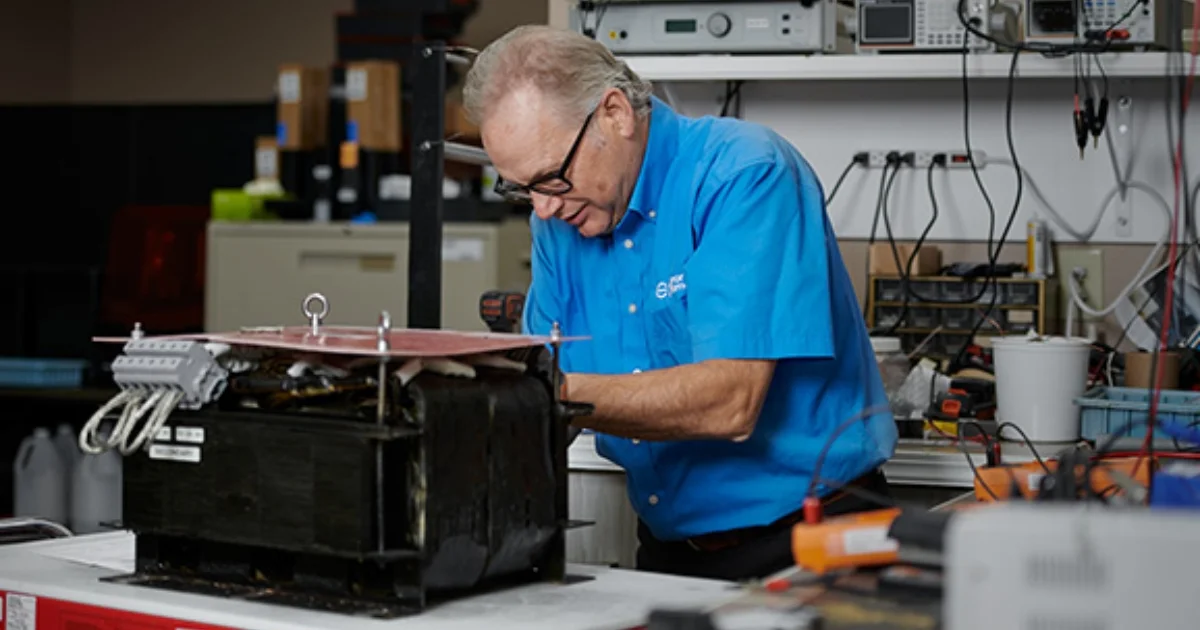
Choosing the right core material doesn't just fine-tune your transformer—it shapes your system's future. From thermal losses and switching frequency to footprint and compliance, the core plays a central role in performance and cost.
That's why teams across aerospace, green energy, and industrial automation trust Electronic Craftsmen to help them make the right call—combining deep material knowledge with collaborative design support. Reliable magnetics don't just move current—they move your project forward.
Ready to optimize your next transformer design with the right core material?
Contact us today for expert guidance on your custom magnetic components.
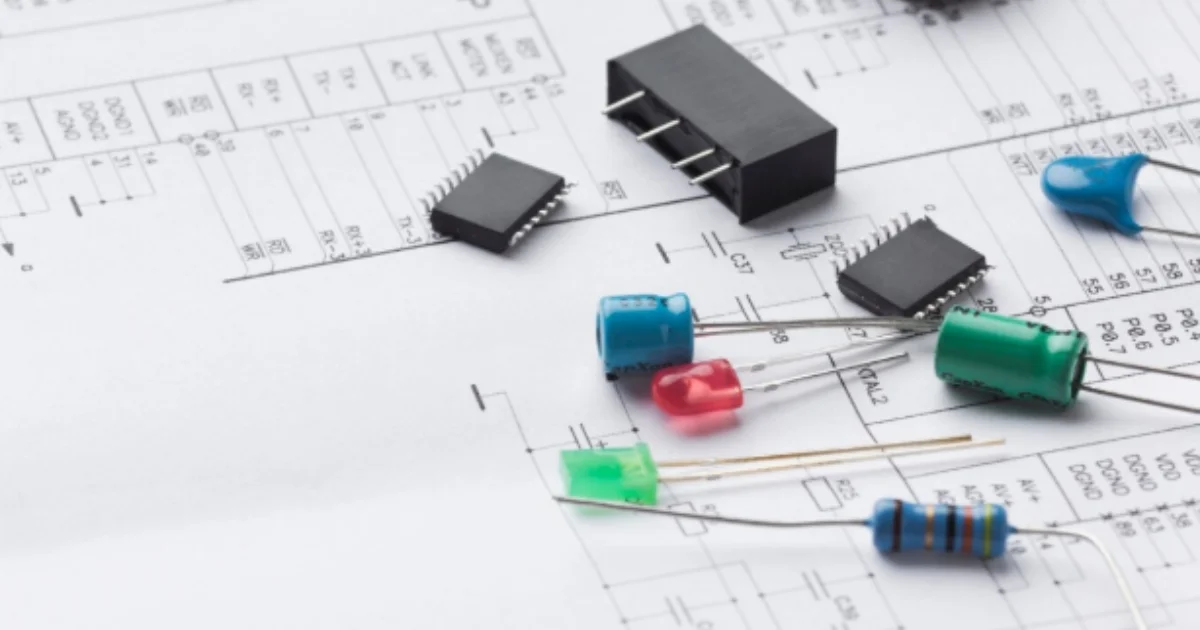
Your product design hits a roadblock. The perfect magnetic component doesn't exist—at least, not off the shelf. For engineers and product designers, this challenge is all too familiar. Selecting the wrong magnetic components can lead to performance issues and additional cost that can affect your bottom line.
As North American manufacturing grows again, companies must find new ways to compete with offshore pricing pressure. The pressure to innovate faster while reducing costs forces difficult trade-offs. Engineers often find themselves choosing between design compromises, extended timelines, or budget overruns. This balancing act becomes even more challenging when standard components fall short of performance requirements.
Time and cost matter more than ever in product development. Companies need to make smaller, better products faster while staying profitable. This is where custom magnetic components can give your product a real edge in the market. Choosing between custom and standard magnetic parts affects everything—from how you design to how customers use your product.
Product development cycles move faster today, so each design choice matters more. When you work with custom magnetic component makers, you get expert help that makes your designs better from the start. This teamwork transforms what could be just a components decision into a strategic advantage for your product's future. Engineers who understand this partnership gain more reliable products, superior performance, and greater market longevity.
Engineers often pick standard parts to save money upfront. This makes sense during early budgeting. But this approach can force design changes that cost more in the end. Getting standard catalog parts can also be tricky.
Supply chains for off-the-shelf parts can be unpredictable, causing surprise delays. These delays can throw off your product schedule and slow down your market launch.
Standard components rarely fit perfectly in your unique design. When engineers are required to fit “square components into round holes”, they are often forced to:
Redesign circuit boards for larger component footprints
Add cooling solutions for parts that run too hot
Install extra shielding to block electromagnetic interference
Create special brackets or mounts
These changes waste time and money, and they add to the overall complexity of the PCB (Printed Circuit Board) or cabinet design.
Using standard magnetic components that aren't finely tuned to your specific needs may result in energy waste in addition to thermal and reliability issues.
Efficiency is always a design consideration in any application; even small percentage improvements can make a significant difference. In power-hungry products like industrial equipment or electric vehicles, efficiency gaps translate directly to energy costs over the product's lifetime. Custom designs convert energy more efficiently, improving system reliability and operational costs.
Custom magnetic compone nts are built to match your exact size needs and packaging limits. Custom connection points make assembly easier and more durable, cutting production time and warranty claims.
With today's push for smaller products, space really matters. Custom transformers and inductors can be sized just right for your needs, often smaller than standard options. This gives your product an edge through better use of space.
Custom transformers and inductors are designed to meet your exact voltage, current, and frequency requirements. A custom design will create optimal power transfer ratios, impedance matching, and frequency response for your specific application.
Custom magnetic components deliver only the electrical performance your application needs—no more, no less.
Duty cycle refers to how long a component remains active within each operating cycle, typically expressed as a percentage. A 60% duty cycle means the part is in operation 60% of the time and idle the other 40%. In magnetic components, a larger duty cycle generates more heat and increases electrical stress—especially in high-current or fast-switching environments.
This is where standard components can struggle. They’re not built around your specific operating profile or thermal requirements. Custom inductors and transformers from Electronic Craftsmen are engineered for your exact duty cycle—reducing core losses, managing heat more effectively, and improving long-term reliability under real-world conditions.
When you work with custom magnetic component makers, you get valuable design expertise and material advice. These expert engineers can suggest solutions you might not have thought of.
Partnering with skilled engineers ensures better performance and reliability. Many custom manufacturers also offer quick prototyping and testing, which reduces risks and gets your product to market faster.
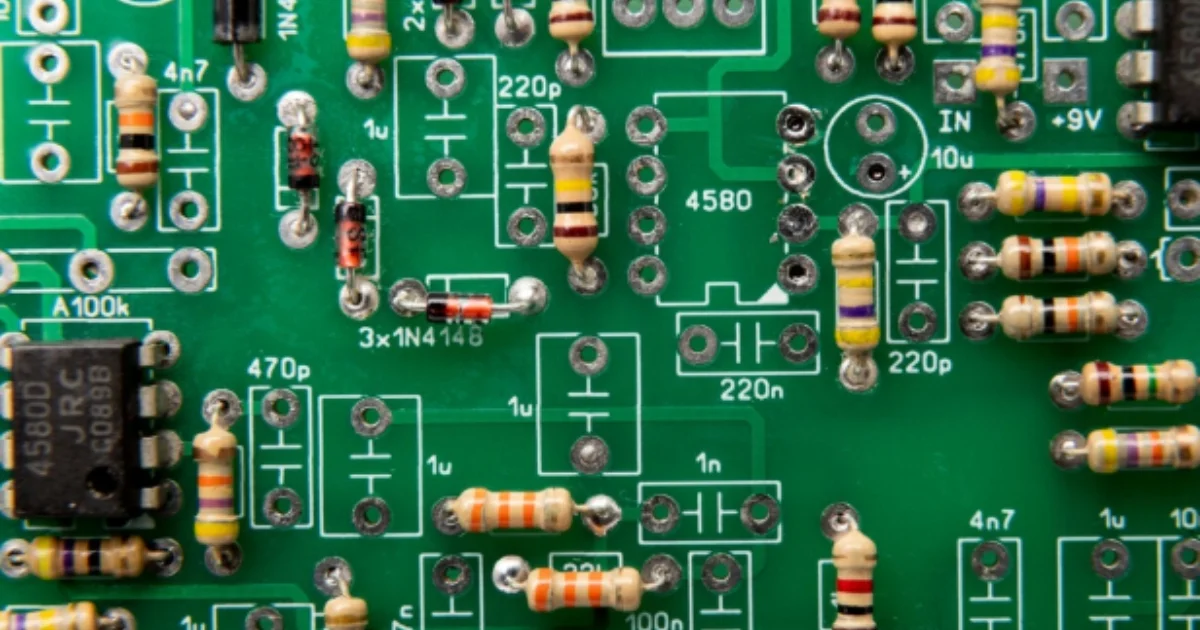
Custom magnetic components offer another big advantage: they can adapt as your needs change. As your product evolves, custom manufacturers can adjust specs step by step without starting over. This flexibility helps when:
Requirements change: custom designs can sometimes be tweaked using the same materials to meet new requirements.
Markets demand higher efficiency or smaller sizes: With a custom collaborator, there may be opportunity for design changes that do not affect the entire assembly.
New technologies create chances for performance improvements within the same package size
With standard components, these changes often mean starting from scratch. Custom magnetic solutions let you build on what you've already done, saving your engineering work across product generations.
MRI machines, surgical tools, and diagnostic imaging equipment require quality components to function reliably.
In medical devices, reliability isn't just about convenience—it can be life or death. Custom transformers provide the stable, clean power that sensitive medical equipment needs, with backup features built specifically for healthcare settings.
The aerospace industry faces tough weight and space limitations that require compact, high-efficiency transformers. Components must also work in extreme temperatures, vibration, and radiation.
In aerospace, lighter and more efficient parts mean less fuel used and longer missions. Custom magnetics can meet the strict quality standards that aerospace and defense require.
Wind turbines and solar panels need high-efficiency inductors and transformers to handle changing power loads. The unpredictable nature of renewable energy creates unique challenges that standard parts struggle with.
Custom magnetic solutions improve power conversion and energy storage. In renewable energy, even small efficiency gains can greatly impact whether a project makes financial sense over its 20–30-year life.
Motors, sensors, and controllers in factories need precise power regulation. Custom magnetics provide the reliability needed in noisy and tough factory settings.
The harsh conditions of 24/7 manufacturing push components to their limits. Custom magnetics designed for these demanding environments help production lines avoid costly downtime while making equipment last longer.
EVs need high-efficiency power electronics to maximize battery life and range. Custom transformers and inductors improve both charging systems and onboard power conversion.
Even small improvements in power conversion efficiency lead to better driving range and faster charging—key factors in EV buyer satisfaction. As EV technology changes rapidly, custom magnetic components can be updated to support new battery technologies and charging standards.
Think of custom magnetic components as an investment in your product's performance and lifespan, not just an expense. Here's why common concerns shouldn't hold you back:
Initial Cost vs. Total Value: While custom components may cost more upfront, they eliminate the need for workarounds and additional parts. This can actually reduce overall system costs when considering simplified assembly, streamlined testing, and improved reliability in the field.
Production Timeline: Modern custom manufacturers have streamlined their processes to compete with off-the-shelf timing. Many offer rapid prototyping that helps prevent costly redesign cycles and delays. With the right partner, custom magnetic components can often be delivered quickly enough to keep your project on schedule.
Design Process: Clear specs and teamwork make customization straightforward. Most engineers find that the time spent defining requirements saves trouble later by avoiding the problems that come from forcing standard parts to fit non-standard uses. Starting with a thorough design discussion helps identify potential issues before they become costly problems.
Minimum Order Quantities: Worried about being forced to order large quantities? Many custom manufacturers now offer flexible production options. They understand that new products often start with smaller production runs before scaling up and will work with you to find the right balance of cost efficiency and order size.
Choosing between standard and custom components isn't just about cost. It's about making products that perform their best in tough markets.
Custom magnetic components offer form, function, and benefits that prevent hidden costs and reliability problems. This is why industry leaders in medical technology, aerospace, renewable energy, and industrial automation use custom solutions to gain an edge.
Working with expert engineers ensures the best design choices for your specific needs. In today's challenging manufacturing world, these advantages can make the difference between a product that just works and one that truly stands out.
Ready to give your product an edge? Contact us today for help with your specific application. Our team of experienced engineers will help you find the perfect magnetic solution for your next product innovation.

Your equipment is down. The transformer failed—and replacements haven’t existed for years. Every day offline costs thousands. Without that magnetic component, the entire system stalls. This scenario plays out in factories, military installations, and medical facilities every day.
Legacy equipment often remains functional and valuable long after manufacturers discontinue support. When magnetic components fail in these systems, operators face difficult choices: expensive equipment replacement, risky third-party alternatives, or complete system retirement.
For effective legacy equipment repair, reverse engineering magnetics offers another path—recreating essential transformer components even when original documentation no longer exists. By carefully analyzing failed components, specialists can develop replacement parts that match or even improve upon original specifications—extending equipment life and avoiding costly system replacements.
Reverse engineering magnetics means disassembling failed transformers or inductors to uncover their exact design and performance. Like solving a puzzle with missing pieces, engineers must decode not just what it did—but how.
The process typically includes:
Physical examination of the damaged component
Careful disassembly (often destroying the original)
Documentation of winding patterns, wire sizes, and core materials
Electrical testing to determine key parameters
Recreation of design specifications
Prototype development and testing
Production of replacement components
For equipment manufacturers and maintenance teams, this process can salvage mission-critical systems when original parts are no longer available. It's particularly valuable in industrial, aerospace, medical, and military applications where equipment lifecycles often exceed component availability.
Legacy systems in aerospace, defense, and medical industries were built to last—but their magnetics weren’t. As components degrade, support disappears, and OEM replacements become impossible to find, creating what McKinsey & Company calls a growing “obsolescence challenge” for OEMs in industrial and defense sectors.
Finding exact replacements becomes nearly impossible. This creates serious problems, especially in highly regulated industries where swapping parts isn't just about function—it's about compliance. Medical devices, defense systems, and aerospace equipment all require strict validation for any component changes. Even when a similar transformer might electrically work, it could violate certification requirements or safety standards.
When critical infrastructure relies on legacy equipment, the cost of total system replacement often far exceeds the cost of reverse engineering a single component. In many cases, reverse engineering can save tens or even hundreds of thousands of dollars while getting systems back online in days rather than weeks or months.
Not every situation calls for reverse engineering. Sometimes, standard replacements or complete system upgrades are more practical. Reverse engineering typically makes the most sense when:
The equipment holds significant operational or financial value
Replacement systems would require extensive redesign, recertification, or retraining
Compliance-sensitive industries (AS9100, ISO9001, medical) need exact replacements
Downtime costs are extremely high
Original manufacturers no longer support the equipment
The unique magnetics are no longer manufactured
But there are limitations. Very complex designs with proprietary materials or specialized components may be difficult or impossible to reproduce. And without certain key information, engineers might need to make educated guesses about some specifications.

In December 2017, an electronic repair firm approached Electronic Craftsmen with a challenge. They had multiple GE power supplies failing due to problematic transformers. With no design documentation available and more units failing daily, they needed a solution fast.
The customer provided epoxy-sealed transformer samples, traced circuit board layouts, and created a sketched schematic. They also took inductance measurements and captured oscilloscope traces. From this limited information, our team identified the component as a "Gate Drive Transformer"—a device that couples gate-drive circuits to MOSFETs and IGBTs, modifies voltage levels, matches impedance, and provides isolation.
Space constraints on the circuit board made the replacement design challenging. To understand the internal construction, we dissolved the epoxy encasing the failed transformer. This revealed critical details about wire size and turn ratio. Based on the exposed physical characteristics and electrical parameters, we developed an entirely new design.
The original used a toroidal core, but our redesign employed an EFD20 platform using 3F3 core material. The gate side utilized triple-insulated TEX-E magnet wire. Drawing on our experience, we determined that expensive epoxy molding wasn't necessary—a simple air-dry varnish would suffice, reducing costs.
After confirming fit, the customer ordered 10 prototypes. We shipped them within a week. By late February, the transformers were field-tested and approved—followed by a 50-unit reorder. The entire project—from problem identification to field-tested solution—took just two months. Read the full GE power supply case study.
Reproducing magnetic components isn't always straightforward. Engineers commonly face these obstacles:
Without original design documents, engineers have to work backward from a failed component. It’s like trying to rebuild a custom tool just by looking at a broken one—you can measure the obvious dimensions, but the exact materials, internal layering, or subtle design choices aren’t always visible. And sometimes, those are the details that matter most.
Varnishes, insulation methods, and winding techniques all impact performance but may not be immediately obvious. An experienced engineer must make informed decisions about these details based on application requirements and physical evidence.
Core materials significantly impact transformer performance. Ferrite compositions, silicon steel grades, and specialized alloys each have unique electromagnetic properties. Identifying the exact material in a decades-old component can be nearly impossible.
Today's material options often differ from those available when legacy equipment was manufactured. Engineers must select modern equivalents that provide similar or better performance characteristics without altering the component's function in the system.
Legacy equipment wasn't designed with replacement in mind. Space limitations, unusual mounting methods, and unique connection types all restrict redesign options. The replacement must fit exactly where the original did—both physically and electrically.
In aerospace applications, this challenge often intensifies. Reverse-engineered components must meet strict physical and functional criteria—including dimensions, mounting methods, and sometimes weight distribution—to maintain compliance and performance. This article explains why these factors are critical when duplicating flight-certified components.
Reverse engineering isn't just about creating exact copies. It offers opportunities to improve on original designs using modern materials and techniques:
Legacy transformers often fail due to heat. Modern insulation and winding techniques improve thermal management—delivering better heat dissipation while preserving original specs and footprint.
Original equipment often used materials and techniques that have been surpassed by modern alternatives. Triple-insulated wire, advanced core materials, and better varnishes can extend component lifespan significantly. This makes reverse-engineered replacements potentially more reliable than the originals they replace.
Original designs sometimes used expensive manufacturing methods that are no longer necessary. In the GE power supply case study, switching from epoxy molding to air-dry varnish reduced costs without compromising performance.
But some changes risk altering component behavior in unpredictable ways. Engineers must carefully balance potential improvements against the need for functional equivalence. This requires both technical expertise and practical experience with legacy systems.
When facing legacy equipment failures, consider these factors before choosing reverse engineering:
System Value: Does the equipment's operational or financial value justify custom component development?
Urgency: Can you tolerate extended downtime while replacements are developed?
Complexity: Are the failed components suitable for reproduction?
Documentation: What information is available about the original design?
Quantity Needed: Will you need multiple replacements now or in the future?
Reverse engineering might cost more than off-the-shelf components initially, but when evaluated as part of a comprehensive legacy equipment repair strategy, it often proves more economical than complete system replacement. It's particularly valuable when you need multiple replacements over time or when a single component failure would sideline expensive equipment.
Reverse engineering magnetics requires specialized knowledge, testing capabilities, and manufacturing expertise. Electronic Craftsmen brings over 60 years of custom magnetics and power electronics experience to each reverse engineering project.
With AS9100 and ISO9001 certifications, Electronic Craftsmen meet the stringent quality standards required by aerospace, defense, and medical industries. This matters when recreating components for critical systems where failure isn't an option.
The company maintains in-house tooling, material sourcing, and comprehensive testing capabilities—essential for accurately reproducing legacy components. Their experience spans aerospace, defense, industrial, and telecommunications applications, providing the knowledge base needed to tackle diverse magnetic designs.
This expertise means they're not just making parts—they're replicating performance-critical solutions that must function exactly like the originals in complex systems.
Magnetic components are often the weakest link in otherwise reliable legacy systems. When these custom parts fail, entire production lines, labs, or communication systems can come to a standstill. But reverse engineering can bring them back to life.
Advances in materials and design now make it possible to recreate magnetic components that match—or even improve on—original specs. With the right expertise, decades-old equipment can keep running efficiently.
A failed transformer doesn’t have to mean system retirement. Contact us before replacing valuable legacy equipment. Even without documentation, their engineers can often develop a working solution that restores full functionality.
You don’t have to choose between full system replacement and costly downtime. Many legacy systems still have years of performance left—with the right magnetic solutions behind them. Why not explore an option that could save time, money, and extend the life of your most trusted equipment?
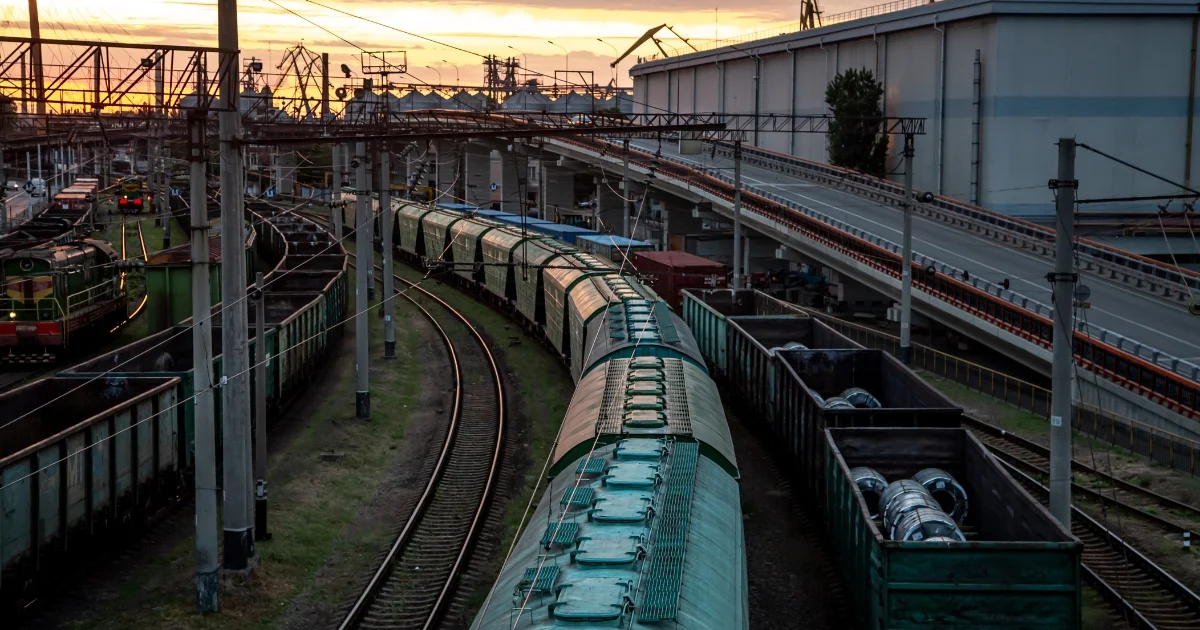
Power supply problems can arise in many ways. When hospital diagnostic equipment produces a blurry image; or train systems malfunction, four key power supply design components are usually involved: inductors, chokes, reactors, and filters. Each one controls power differently and selecting the wrong components during power supply design risks complete equipment failure.
In high reliability settings such as aerospace and medical facilities, power supply issues can cause equipment overheating, incorrect readings, or equipment that stops working completely. As an example, hospital imaging machines need special filters for clear imaging. A second example can be train systems that need powerful reactors to handle massive electrical loads. Off the shelf components often can't handle these tough jobs.
Different equipment needs different power solutions. Medical equipment must have clean, steady power. Aircraft systems need reliable power for safety. Factory machines need stable power to keep running. When basic components aren't enough, custom-designed solutions protect this critical equipment from failure.
This guide explains what makes each power component different and when you need custom versions. Whether you work with simple equipment or complex systems, knowing these differences helps avoid costly mistakes.
An inductor is used to introduce Inductance (L) into an electric circuit, preventing sudden changes in current flow. When a current (i) flows through the coil of an inductor, it develops a voltage potential (e) across its contact leads. This process allows the inductor to temporarily store electrical energy in a magnetic field within the core and around the coil. The core enhances the inductance and efficiency by concentrating magnetic flux lines within a closed magnetic path structure, helping to stabilize power inconsistencies.
An inductor's performance is determined by factors such as core material, wire gauge, air gap, and the number of turns in the coil. Most inductors use iron, ferrite, or air cores, each offering different characteristics for specific applications. The number of turns and the core type influence the strength of the magnetic field, directly affecting how the inductor functions within a circuit. For a deeper look at how inductors work, this technical guide from Bel Fuse covers their role alongside chokes, reactors, and filters.
You'll find inductors hard at work in many important industrial systems, such as:
In solar and wind power installations, they help convert unstable power into smooth, usable electricity.
Inside factory robots and automated systems, they keep power steady, so machines run smoothly.
In medical imaging equipment, they filter out electrical noise that could blur important diagnostic images.
While standard inductors work for basic jobs, you need a custom solution when your system requires a specific voltage or frequency range, when you're working with tight spaces or weight limits, or when your equipment operates in tough conditions like extreme heat or vibration.
Getting the right inductor, especially when you need a custom one, isn't just about making things work. It's about making them work reliably and efficiently for years to come. That's why engineers spend so much time choosing exactly the right inductor for each job.
A Choke is an Inductor type with or without a ferromagnetic core, used to block, hence “choke”, alternating current (AC) in a circuit by limiting the rate of change over a specified frequency range, while allowing passage of lower frequency AC or direct current (DC). This effect is often used in power supply circuits where the public AC mains (line) supply has to be converted to a DC supply suitable for powering electronic circuits.
In critical equipment like medical scanners or aircraft systems, this type of inductor protects against power disturbances that could cause equipment damage or system failures.

There are two main types of chokes, each designed to handle different forms of interference.
Common-mode chokes target interference affecting multiple power lines at once. Medical imaging systems need these to maintain diagnostic accuracy. Aircraft navigation depends on them for reliable signal quality. A failure in common-mode filtering could lead to blurred scans or corrupted flight data. These components are especially crucial in environments with high external interference.
Differential-mode chokes handle interference between individual power lines within a system. Manufacturing facilities rely on them to protect automated equipment from internal power fluctuations. Without proper filtering, voltage spikes could damage expensive machinery or halt production entirely. In industrial settings, these chokes often prevent costly downtime and equipment damage.
Chokes are widely used in hospitals, aircraft, factories, and data centers, where clean power is a necessity. In medical applications, chokes help maintain diagnostic accuracy, ensuring reliable imaging results. Aerospace electronics depend on them to keep communication and navigation systems free from interference. In industrial automation, they prevent voltage fluctuations from disrupting robotic precision and production efficiency.
While standard chokes work in many applications, some industries require specialized designs. Extreme electrical noise, unique frequency requirements, or strict regulatory compliance may demand custom chokes tailored to specific operating conditions. In these cases, engineered solutions provide the precise filtering needed to ensure uninterrupted performance and system longevity.
Reactors are large electrical reactors that keep industrial power systems stable and protected. Unlike regular inductors, these parts handle huge electrical loads, stopping power surges that can damage costly machines or shut down entire operations.
The science behind reactors is straightforward but critical. They create controlled electrical impedance in power circuits, acting as a barrier against voltage spikes and harmonic distortion. Without this protection, power fluctuations could overheat motors, trigger system failures, or cause widespread equipment damage.
Line Reactors guard industrial systems against power surges. When voltage suddenly spikes, these reactors absorb the excess power that would otherwise destroy factory equipment, HVAC systems, or motor drives.
Harmonic Reactors tackle power quality issues caused by modern electronic equipment. Variable frequency drives (VFDs) and uninterruptible power supplies can create electrical noise that strains systems. These reactors clean up the power, keeping equipment running within safety standards.
Load Reactors protect motors from electrical stress. In mining operations, railways, and industrial automation, motors need consistent power to function reliably. These reactors prevent overheating and control startup current surges.
Reactors play a vital role in power plants, transportation systems, manufacturing facilities, and renewable energy infrastructure – anywhere stable power distribution is necessary. In high-voltage substations, reactors help prevent electrical overloads that could cause grid instability. In electric train systems, they regulate power flow to traction motors, ensuring safe and efficient operation.
While standard reactors work in many applications, some systems require custom-engineered solutions to handle specific voltage levels, frequency conditions, or environmental constraints. Reactors designed for extreme temperatures, high-vibration environments, or unique electrical loads provide greater reliability and efficiency compared to off-the-shelf models.
Power filters remove unwanted electrical noise and interference from power systems. Unlike basic surge protectors, these components provide sophisticated frequency control, ensuring equipment gets clean, stable power. This filtering capability is crucial in medical facilities, electronics manufacturing, and communications systems where signal quality directly affects performance.
Filters use specific combinations of electrical components to control which frequencies pass through. Through careful design of inductors and capacitors, they create paths that trap interference while allowing desired power signals to flow. This selective blocking prevents both electromagnetic (EMI) and radio frequency (RFI) interference from disrupting sensitive equipment.
Different types of filters handle different jobs:
Low-pass filters block high-frequency interference while allowing lower frequencies through. These protect power supplies and sensitive electronics from fast-changing electrical noise that could cause malfunctions.
High-pass filters do the opposite - they block low-frequency interference while allowing high-frequency signals to pass
Bandpass filters are more selective, allowing only specific frequency ranges to pass through. Medical imaging equipment relies on these for precise signal control and clear diagnostic results.
EMI filters handle a specific challenge: electromagnetic interference. They shield sensitive electronic systems from the electrical noise generated by motors, power lines, and wireless devices. In industrial settings, where heavy machinery operates near delicate control systems, EMI filtering prevents equipment failures and data corruption.
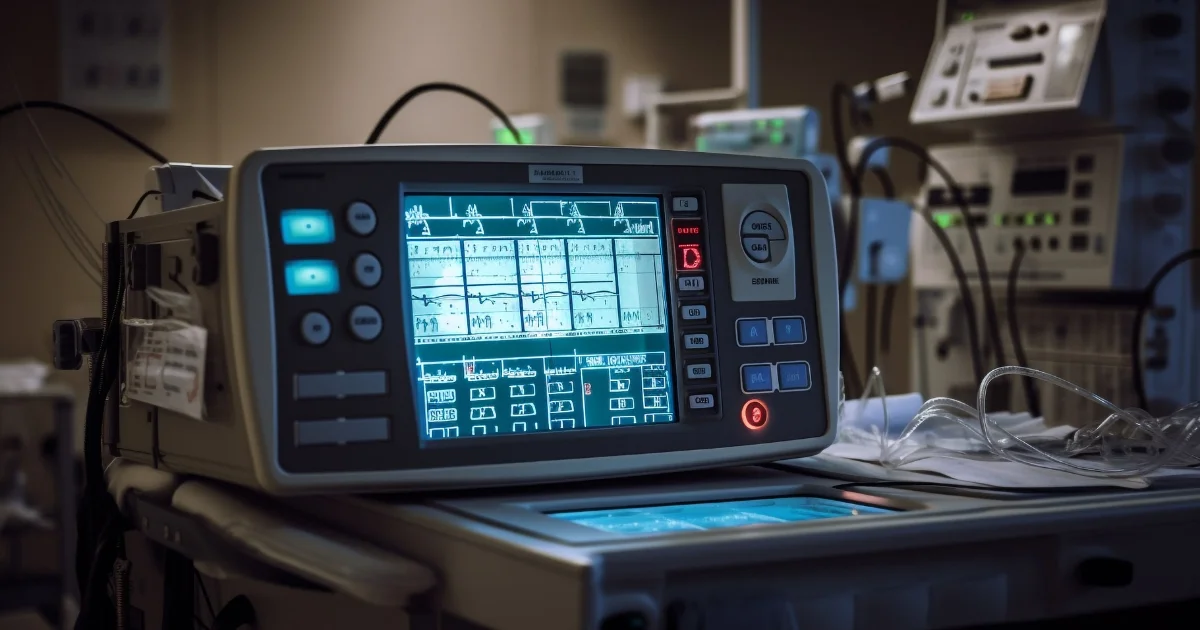
Filters protect essential equipment in some of the toughest conditions. In hospitals, they keep power steady for accurate test results – one small power problem could affect patient care. Telecommunications centers rely on them to keep data flowing smoothly through their delicate communication systems. Without proper filtering, important messages could be lost.
Manufacturing facilities need filters to protect precision machinery. Modern factory floors run on complex automated systems that depend on clean, stable power. Even minor electrical interference can throw off calibration or cause expensive production errors. Research laboratories face similar challenges, where delicate scientific instruments need pristine power conditions for accurate measurements.
While standard filters handle common interference problems, many specialized applications demand custom solutions. High-tech medical equipment might need filters designed for specific frequency ranges. Data centers often require filters that can handle unusual power loads or meet strict performance standards. Manufacturing equipment might face harsh electrical environments that overwhelm basic filters.
Custom-engineered filters become essential when standard components can't meet these challenges. Whether it's dealing with high-frequency noise, meeting strict regulatory requirements, or handling unusual power conditions, these specialized filters ensure reliable operation where standard units would fail. In critical applications where clean power directly affects performance and safety, custom filtering solutions protect both equipment and operations.
Choosing the right electrical component requires matching your system's exact needs. Whether you need an inductor, choke, reactor, or filter, getting it wrong can lead to equipment damage or system failure.
Key Selection Factors:
Power and Frequency Needs: Components must handle your specific power levels and electrical signals
Environmental Requirements: Consider heat, vibration, and moisture resistance needs
Load Capacity: Ensure components can handle your system's full electrical load
Safety Standards: Match industry-specific requirements for medical, aerospace, or industrial use
Think of custom components as an investment in reliability. While they might cost more upfront, they can prevent expensive problems down the road. For critical systems where failure isn't an option, custom-engineered solutions often provide the best long-term value.
From medical equipment to high-speed trains, the right power components keep critical systems running safely. Whether you need an inductor, choke, reactor, or filter, choosing the wrong one risks expensive repairs or dangerous failures. Custom solutions provide the reliability these systems need to run safely and meet all requirements.
Ready to find the right solution? Let's discuss your specific needs.
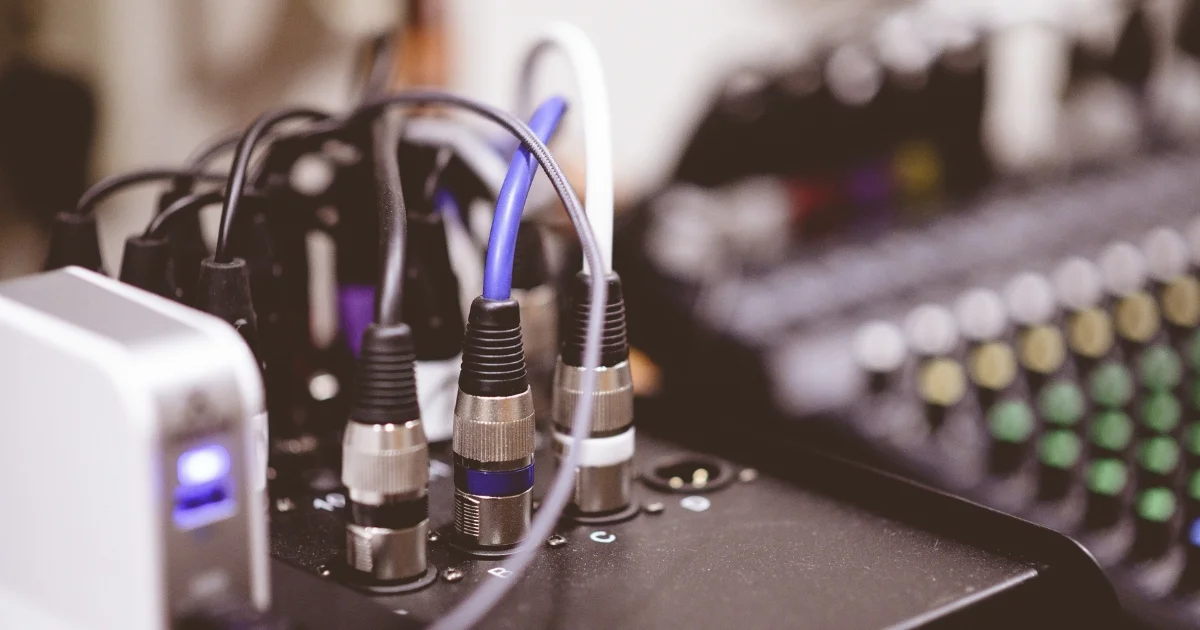
One of the most critical components when designing a power supply for your equipment is a compatible transformer. If your equipment doesn’t receive the correct voltage, things can go downhill fast. Overheating components and equipment malfunctions are disasters waiting to happen. In industries that depend on precision—like medical, aerospace, and manufacturing—small power fluctuations can lead to costly downtime and failures.
A transformer does more than adjust voltage—it protects equipment, improves efficiency, and ensures reliability. Choosing the right one minimizes downtime, extends equipment life, and controls costs.
At its core, a transformer is just coils of wire wrapped around an Iron or ferrite core. Voltage is applied to one coil (the primary winding), creating a fluctuating magnetic field. That fluctuating field then transfers energy to the second coil (the secondary winding), “transforming” the applied voltage.
If the secondary coil has more windings than the primary winding, the voltage increases (step-up transformer). If it has fewer, the voltage decreases (step-down transformer). The frequency stays the same, but the transformer designer can vary the primary to secondary turns ratio to match what the system needs.

You’ll find transformers everywhere, keeping power stable and reliable:
Aerospace & Aviation – Powering radar, flight controls, and navigation systems.
Medical Equipment – Delivering stable voltage to MRI machines, surgical tools, and lab equipment.
Manufacturing & Automation – Preventing voltage fluctuations that could shut down assembly lines.
Renewable Energy – Converting power from wind and solar into usable electricity.
Different industries have very specific power needs. The wrong transformer can lead to wasted energy, equipment failures, or expensive downtime. The right one ensures efficiency, reliability, and long-term performance – which is why picking the right transformer isn’t just a technical decision. It’s a business-critical one.
A transformer is what keeps power stable and equipment running the way it should. But if the transformer isn’t a good match for the system, the consequences go beyond inefficiency. Poor voltage control leads to wasted energy, unstable performance, and in some cases, complete system failure.
When a transformer isn’t designed for the load it’s handling, energy gets lost as excess heat instead of useful power. That heat buildup isn’t just wasteful – it puts extra stress on the system. In industrial settings, even small inefficiencies add up. A factory running multiple misaligned transformers could be losing thousands of dollars in wasted electricity every year.
Unstable power is a slow killer. When voltage keeps shifting up and down, sensitive electronics start to wear out. Medical imaging machines, for example, require less than a 1% variation in voltage to function properly.
A transformer that can’t maintain steady output could cause distorted scans or unreliable test results. In manufacturing, unstable voltage can shut down automated systems or throw off precision equipment, leading to defects and downtime.
A transformer that isn’t rated for the job runs hot. And when it overheats, the entire system is in danger. Over time, excessive heat weakens insulation, damages wiring, and increases the chances of short circuits. In extreme cases, it can lead to catastrophic failures that take down an entire operation.
A large solar energy facility saw 30 transformer failures in six months. The cause? The transformers weren’t designed for the plant’s specific load requirements. The insulation inside them broke down under high temperatures, leading to repeated shutdowns. After switching to properly rated transformers, the failures stopped, and power output stabilized. Read the full case study here.
A well-designed transformer protects the system just as well as it powers it. In industries like healthcare, aerospace, and manufacturing, unreliable power isn’t just inconvenient – it’s a financial and operational risk. Choosing the right transformer ensures:
Consistent power flow to keep operations running without interruptions.
Lower maintenance costs by preventing overheating and equipment wear.
Longer lifespan for both the transformer and the equipment it powers.
The bottom line? A transformer might seem like a small part of a larger system, but when it’s the wrong one, the costs go far beyond just replacing a faulty component.
Not all transformers are created equal. While standard, off-shelf models work in some cases, many industries require precision power control that generic transformers can't provide. That's where custom transformers come in. They're designed to match specific voltage, current, and environmental demands, ensuring that equipment runs efficiently and safely.
Every system has unique power needs. Some equipment demands exact voltage with zero fluctuation, while others handle high loads and need specialized insulation to prevent overheating. A custom transformer matches these exact specifications, avoiding the risks of one-size-fits-all solutions.
In medical technology, aerospace, and automation, space matters. Standard transformers often prove too bulky or inefficient for tight spaces. Custom transformers fit specific size and weight limits without compromising power delivery.
Some environments push equipment to its limits. Systems might face extreme temperatures, constant vibration, or corrosive conditions where standard transformers fail. Custom-built units handle:
High heat and humidity in mining operations
Constant vibration in aerospace applications
Outdoor exposure in renewable energy system
Healthcare, aviation, and defense have strict regulations. Equipment must meet specific safety and performance standards. Custom transformers comply with these certifications from the start, preventing compliance issues and expensive fixes later.
A transformer isn't just another electrical component – it's the backbone of your power system. It regulates voltage, ensures equipment operates efficiently, and protects against costly failures. When chosen correctly, a transformer keeps power stable, extends equipment life, and reduces energy waste. But the wrong transformer leads to overheating, equipment malfunctions, and unplanned downtime – problems that cost thousands in repairs and lost productivity.

Transformer failures don't just stop one machine – they shut down entire operations. Manufacturing lines freeze, costing thousands per hour in lost production. Data centers crash, affecting countless users and damaging client trust. Hospitals face delayed procedures and compromised patient care. A properly matched transformer prevents these issues by maintaining reliable, stable power.
Poor transformer efficiency wastes power as heat, driving up electricity bills and straining cooling systems. In industrial settings, even small efficiency improvements save thousands annually. Better transformers minimize losses through improved design and materials, turning more input power into usable output instead of waste heat.
Power fluctuations kill equipment fast. High voltage burns out electronics. Low or unstable voltage makes systems work harder, wearing them out sooner. Motors fail early, circuit boards break down, and precision machines lose calibration. Quality transformers prevent these issues by delivering exact voltage levels without fluctuation.
Many industries face strict power regulations. Medical facilities need specific power quality for patient safety. Aerospace requires transformers that meet rigorous standards. Using the wrong transformer means failed inspections, regulatory violations, and expensive fixes.
While cheaper transformers save money upfront, long-term costs add up through frequent repairs, higher energy bills, damaged equipment, and production losses. For industries where power quality affects performance and safety, the right transformer is essential for operational success.
At Electronic Craftsmen, we specialize in transformers that match your exact needs. Our team works with you to understand your requirements, space limitations, and operating conditions. We'll help design a solution that keeps your systems running reliably for years to come.
Ready to improve your power system? Let's talk about how we can help make your equipment work better, last longer, and cost less to operate.
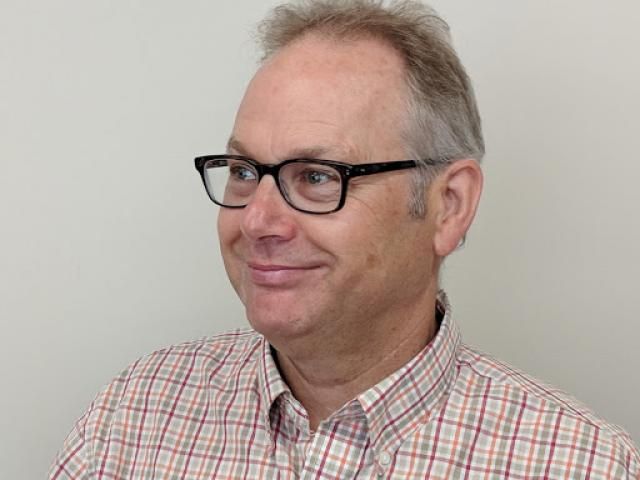
Like many people these days, Tom wears multiple hats - not only is he our President and Engineering Manager, he’s also our “innovative leader” with a constant craving to learn. He came to us with solid credentials - a Bachelor’s degree in Electrical Engineering from esteemed University of Waterloo in 1981 followed by his licence as a Professional Engineer in 1984.
Electronic Craftsmen is the perfect place for Tom and his expertise because the complex transformers & inductors that we design are essentially electric devices with multi-dimensional mechanical, environmental and thermal characteristics.
Tom takes pleasure in the challenge of figuring out how to build a part after he's calculated the electrical design. Once the technical requirements are met, he puts his creative talents to work on how to best assemble the device to withstand the rigours of time and abuse of its intended environment. Many of our parts are used in highly sensitive and demanding environments and this is where Tom’s expertise is critical.
There is very little new information available on the science of transformers – most books on the subject were written 50+ years ago. In today’s obsession with “digital disruption”, the design of transformers and inductors has become a bit of a lost science; here at Electronic Craftsmen we're reinventing this technology by combining years of experience with state-of-the-art materials.
One of Tom’s most significant contributions to E Craftsmen is his understanding of Thermodynamics.
He is skilled in the complexity of thermal transfer within the windings & core of a magnetic device and in the mechanics of moving heat energy using air and/or fluid flow. Why is this so important? Transformer heating is arguably the most potentially destructive element in a design and understanding how to effectively extract it is crucial to the long-term reliability of any part.
Tom is renowned for his collaboration with leading aircraft designers on Boeing and Airbus platforms - we’re very proud to say that our parts have been flying in many of these aircraft for over 35 years.
Tom is an essential asset to our clients and to the Electronic Craftsmen team.
He has the drive and the know-how to consistently make parts that surpass expectation – that’s why our clients keep coming back!

